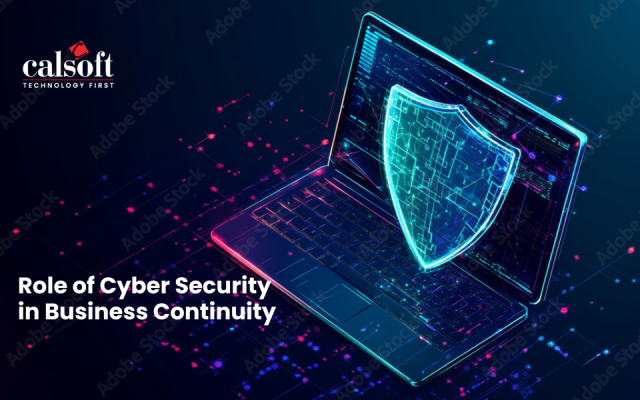Change is inevitable and so is applicable to datacenters. Trends show that datacenters are adopting new changes as many disruptive technology vendors embark into the datacenter business. Players ranging from flash storage to software defined storage, viz., Pure Storage, Nimble, Nutanix, Simplivity, etc., are all boarding this technology. Storage technologies have shown great prominence in adopting new methods of data reduction, data protection, encryption, virtualization to cater business needs.However, the last few years have witnessed storage evolving in a new form factors known as hyper-converged infrastructures that is a whole new definition of Software Defined Storage (SDS).
Hyper-convergence is translating a bunch of technological silos in traditional storage into meaningful adoption wherein the customers choose one stop solution over traditional storage vendor.
What is Hyper-Converged Infrastructure?
According to Wikipedia, Hyper-Converged Infrastructure is a software defined architecture which tightly integrates compute, storage, networking and virtualization resources and other technologies from scratch in a commodity hardware box supported by a single vendor.
Calsoft Whitepaper: Storage Performance Testing Guidelines
Software defined approach has enabled simplification and modernization of datacenter eco-system thereby providing a whole new definition of datacenter in coming years.
Storage is one of the most critical aspects in the entire datacenter environment. It requires sophisticated skills to manage. Its failure impact, loads of other services as well. In hyper-converged infrastructure, underlying storage hardware is wholly abstracted into software enabling policy based management with supporting APIs. For example, by moving administration one layer up from LUN level to VM level, policies can be applied more uniformly and efficiently.
Different solutions from hyper-converged infrastructure
In converged architecture, the storage is directly attached to the physical servers where in hyper-converged architecture, storage controller acts as a software service on each node in the cluster. This software defined approach combines all of the local storage across the cluster and configures it as a single storage pool. Moreover there is no requirement for the expensive SAN or NAS hardware in the hyper converged infrastructure. And the role of hypervisors are going to be similar be it software defined or traditional approach as they still continue to communicate in the same way.
Most hyper-converged systems use VSA (Virtual Storage Appliance) approach for handling storage abstraction., viz., Nutanix, Simplivity, Maxta, to name a few. Needless to mention VSA is a VM like any other VMs with software defined storage stack running. The biggest advantage of choosing VSA is multi hypervisor support, which offers easy portability. There are more VSA based hyper-converged infrastructure solutions available on the market today.
There is another hyper-converged method known as kernel integrated storage also known as hyper visor integrated storage which is of non VSA type. In this case hypervisor kernel handles storage management instead of VM. Some familiar kernel integrated hyper-converged infrastructure solutions are VMware VSAN/EVO:RAIL, Gridstore.
It’s Difficult to judge which of the above two solutions are better; it’s just two different ways to achieve the same objective. The decision of choice could depend upon other goals in the customer environment.
Again, for the existing traditional or converged storage vendors to take advantage of hyper-converged infrastructure with the software defined approach as the technological secret sauce.
Benefits of Hyper-Converged Infrastructure
- A single vendor solution approach offers economies of scale in design, delivery, operations and support
- Shift to software focus, provides flexibility to meet current and future business needs without altering infrastructure components. Moreover, customers would get direct benefit of any new features in the updated software release w/o having to replace the hardware.
- Centralized systems and management using single pane of glass
- Agility and quick response as the new need arises such as workload migration will be quick and smooth
- Its granular scalability feature offers greater control over infrastructure costs and better resource utilization. It can scale easily as business demands more resource.
- VM centric as virtual machines are the most basic constructs of the hyperconverged infrastructure thereby easing administrators job by focussing only on VMs rather than the data center or underlying services
- Highly efficient use of resources by deploying different applications in a single shared resource pool w/o worrying about impact of blended I/Os
- In built backup, recovery and disaster recovery solution for continuous data protection
- Efficient VDI deployment, minimizing VDI login storms with better and predictable performance at peak demand.
- Easy automation with centralized management tools.
Hyper-converged infrastructure use cases
Following are some of the well-known use cases of hyper-converged infrastructure:
- Virtual Desktop Infrastructure (VDI)
- Disaster recovery and ROBO deployment
- Wide range of virtualized workloads including mission critical applications
- Distributed NoSQL and Hadoop based applications
Also, there are speculations around hyper-converged infrastructure solution that could be an alternative to public cloud going forward.
Hyper-converged infrastructure challenges:
There have been much deliberations and thoughts around hyper-converged infrastructure where the solution may not be a good fit. Following points highlight some of the challenges:
- Deploying large mission critical applications may not be a viable solution, some applications may need to be rewritten to adopt hyper-converged model
- Some big enterprise apps like Oracle, SAP seem to run very well in hyper-converged yet
- Change to the procurement model is another big business challenge
- Vendor reliability – need to see if all the vendors going to be around in next few years
My 2 cents:
Above all there is a lot of buzz around hyper-converged infrastructure being the next generation after converged infrastructure and is the next step towards software defined approach controlling the entire datacenter. It will be Interesting to see how hyper-convergence will continue to evolve in capitalize datacenters.
To know more email: marketing@calsoftinc.com
Contributed by: Santosh Patnaik | Calsoft Inc
Calsoft Storage Expertise
Leveraging years of experience with Storage platforms, ecosystems, operating systems and file systems, Calsoft stands as pioneer in providing storage product R&D services to ISVs. Our service offerings enable storage ISVs/ vendors to quickly develop next generation storage solutions that can perform and cut across enterprise IT needs.






